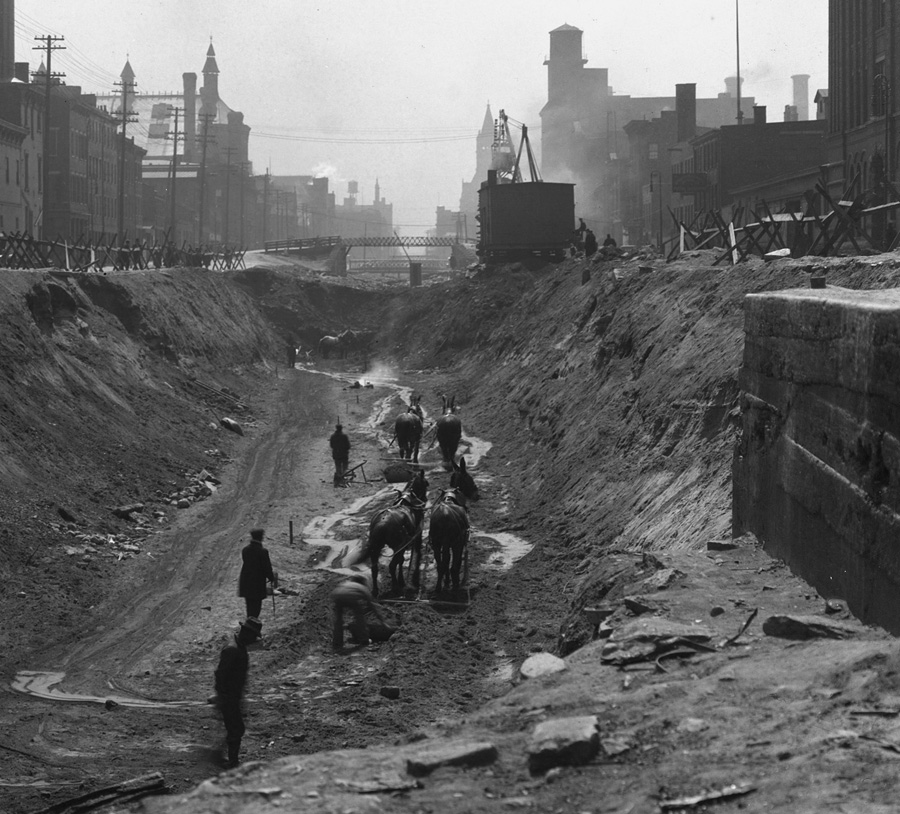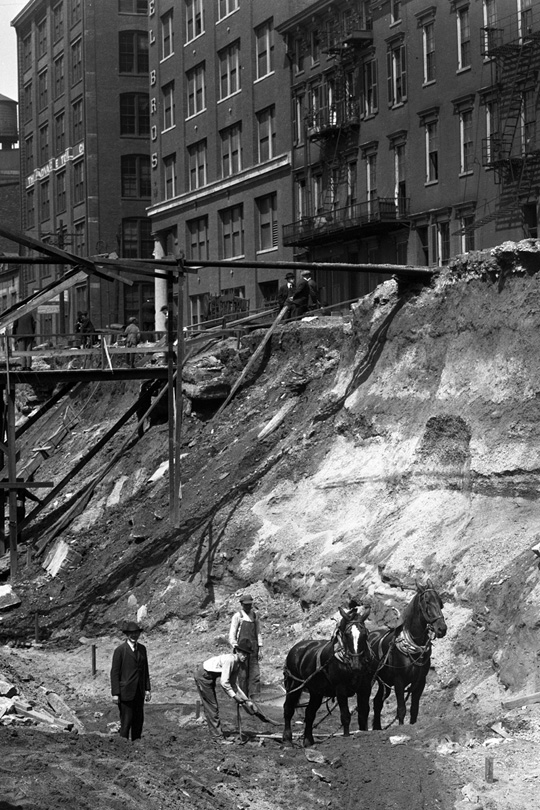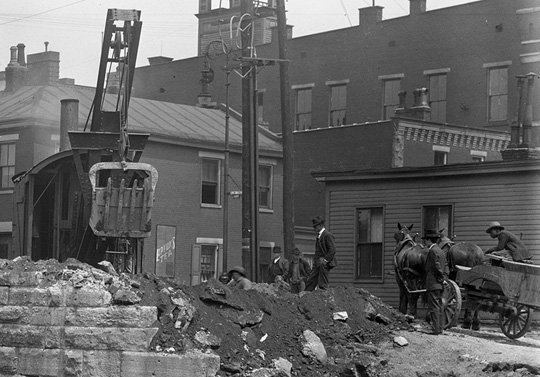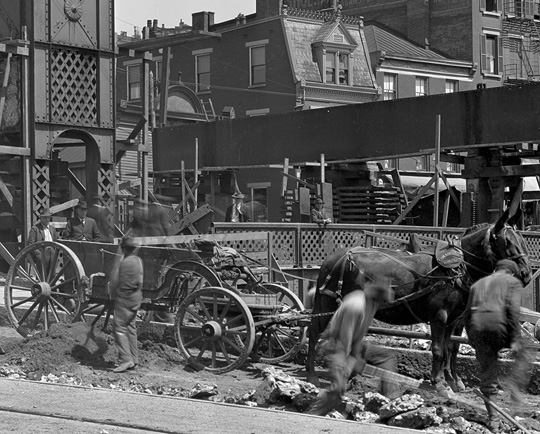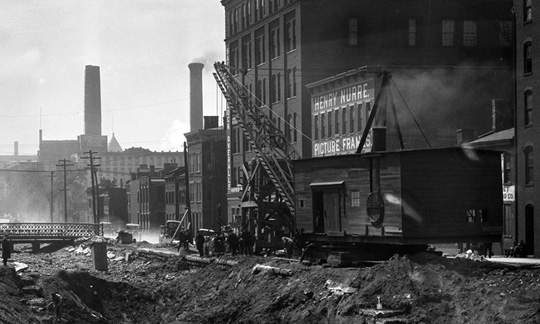By: Angela Vanderbilt
An interesting element appears now and again in the subway construction scans. Among the engineers, construction crews and machinery are some four-legged workers. Images of horses being utilized in the subway construction effort appear as late as 1926, and images of horse-powered transportation, including buggies and delivery wagons, are seen as late as 1931.
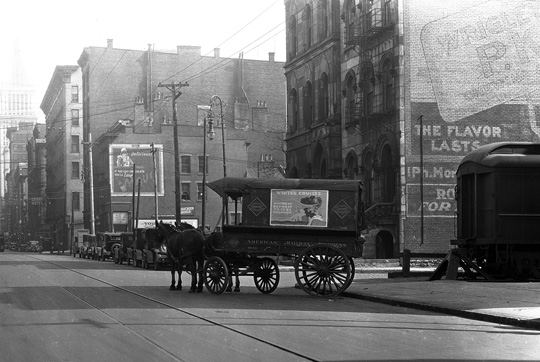 Horse power was used to haul wagonloads of earth, rocks and other debris from the drained canal bed, as well as with leveling and smoothing the track bed once digging was completed. Horse drawn wagons were also used to haul equipment and supplies to-and-from the work sites.
Horse power was used to haul wagonloads of earth, rocks and other debris from the drained canal bed, as well as with leveling and smoothing the track bed once digging was completed. Horse drawn wagons were also used to haul equipment and supplies to-and-from the work sites.
Heavy construction equipment such as bulldozers and dump trucks weren’t as prevalent as you see in today’s construction zones, but early versions of the machinery can be seen in the images captured by our photographer. Steam powered shovels, back hoes and concrete mixers were large and cumbersome looking. One piece of machinery even looked like a house on a rotating axis! Even as more mechanical means of construction were being introduced, horses were still needed for many tasks and could be found right alongside the machinery.
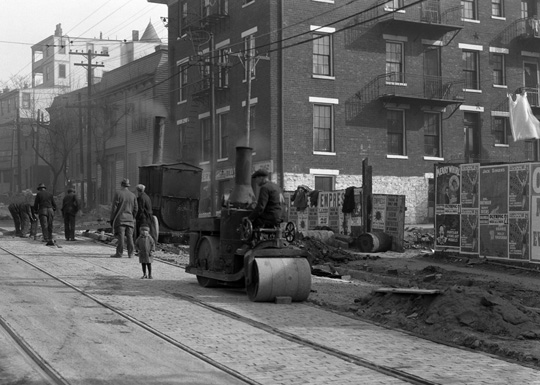
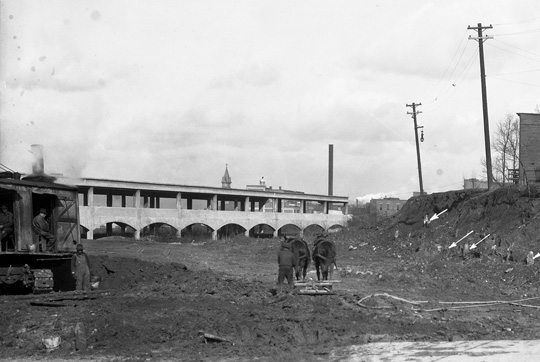 Horse drawn buggies and carriages, as well as delivery wagons and carts, can be seen in photographs in the collection in areas all around Cincinnati. Delivery wagons were found in the downtown streets among the street cars and automobiles, as well as in the suburban neighborhoods.
Horse drawn buggies and carriages, as well as delivery wagons and carts, can be seen in photographs in the collection in areas all around Cincinnati. Delivery wagons were found in the downtown streets among the street cars and automobiles, as well as in the suburban neighborhoods.
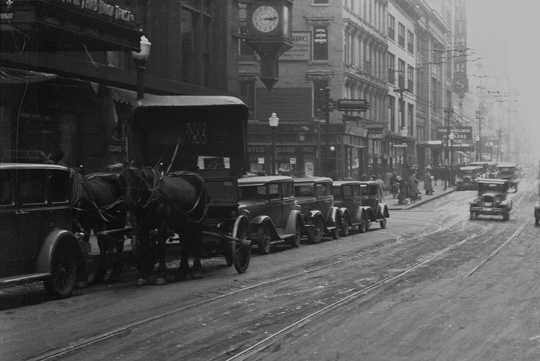
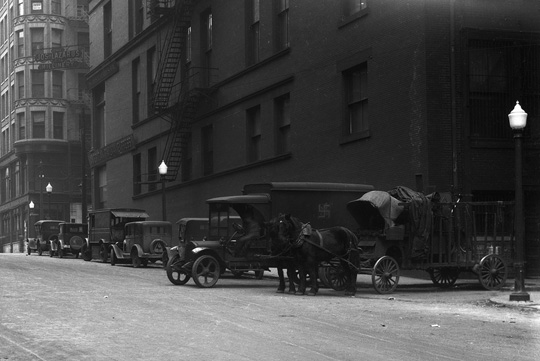 The automobile was still relatively in its infancy in the 1920s, but quickly gaining popularity among the citizens of Cincinnati. Increased availability and the affordability of the Model T, not to mention the status of ownership, made it a hot commodity for the average citizen. The need for a rapid transit system to move large numbers of Cincinnatians to their destinations had diminished due to the prevalence of the automobile, just as the need for traditional “horse power” was no longer necessary. The future of the subway project was uncertain as the 1920s drew to a close.
The automobile was still relatively in its infancy in the 1920s, but quickly gaining popularity among the citizens of Cincinnati. Increased availability and the affordability of the Model T, not to mention the status of ownership, made it a hot commodity for the average citizen. The need for a rapid transit system to move large numbers of Cincinnatians to their destinations had diminished due to the prevalence of the automobile, just as the need for traditional “horse power” was no longer necessary. The future of the subway project was uncertain as the 1920s drew to a close.
 This project is funded by a grant for $60,669 through the Library Services and Technology Act, administered by the State Library of Ohio.
This project is funded by a grant for $60,669 through the Library Services and Technology Act, administered by the State Library of Ohio.

